Abstract
Cultures of Colletotrichum lindemuthianum (Saccardo and Magnus) Scribner have been induced to secrete an endopolygalacturonase (polygalacturonide glycanohydrolase EC3.2. 1.15). This enzyme has been brought to a high state of purity by ion exchange, gel filtration, and agarose affinity chromatography. The enzyme has optimal activity at pH 5, has an apparent molecular weight as determined by gel filtration of about 70,000, and prefers polygalacturonic acid to pectin as its substrate. The enzyme, while hydrolyzing only 1% of the glycosidic bonds, reduces the viscosity of a polygalacturonic solution by 50%. Nevertheless, the initial as well as the final products of polygalacturonic acid hydrolysis are predominantly tri- and digalacturonic acid and, to a lesser extent, monogalacturonic acid. The purified enzyme catalyzes the removal of about 80% of the galacturonic acid residues of cell walls isolated from suspension-cultured sycamore cells (Acer pseudoplatanus) as well as from the walls isolated from 8-day-old Red Kidney bean (Phaseolus vulgaris) hypocotyls.
Full text
PDF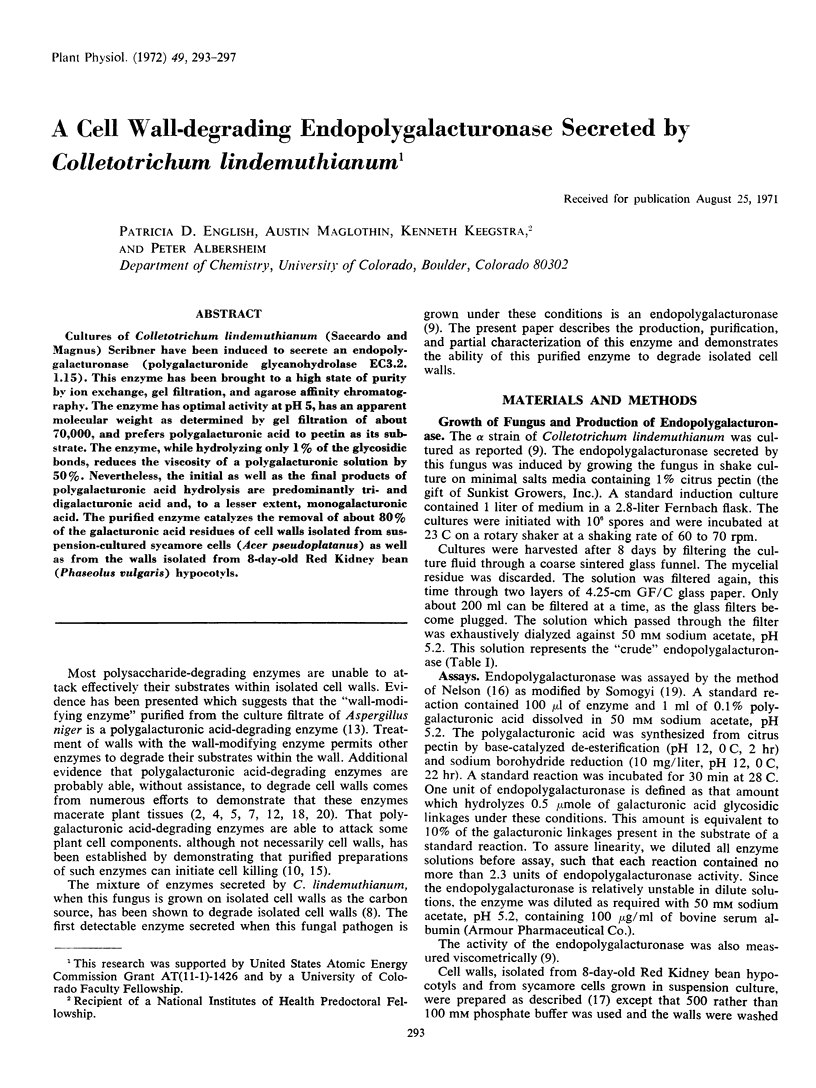
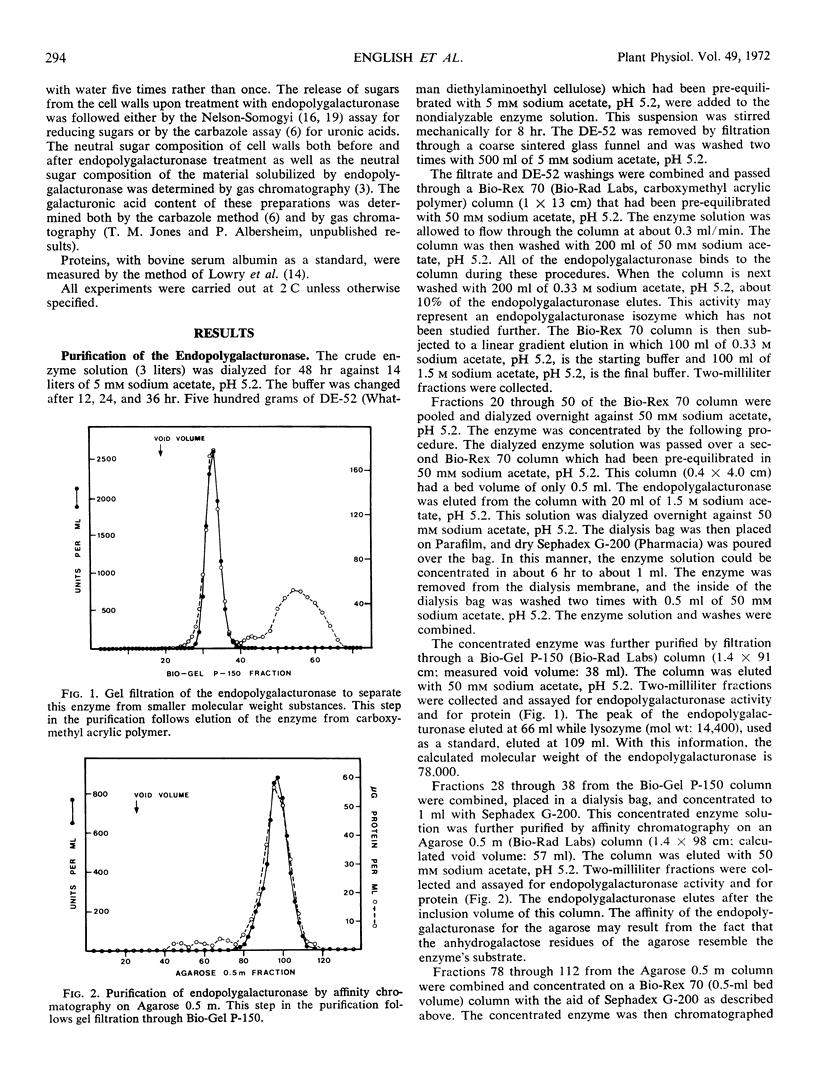
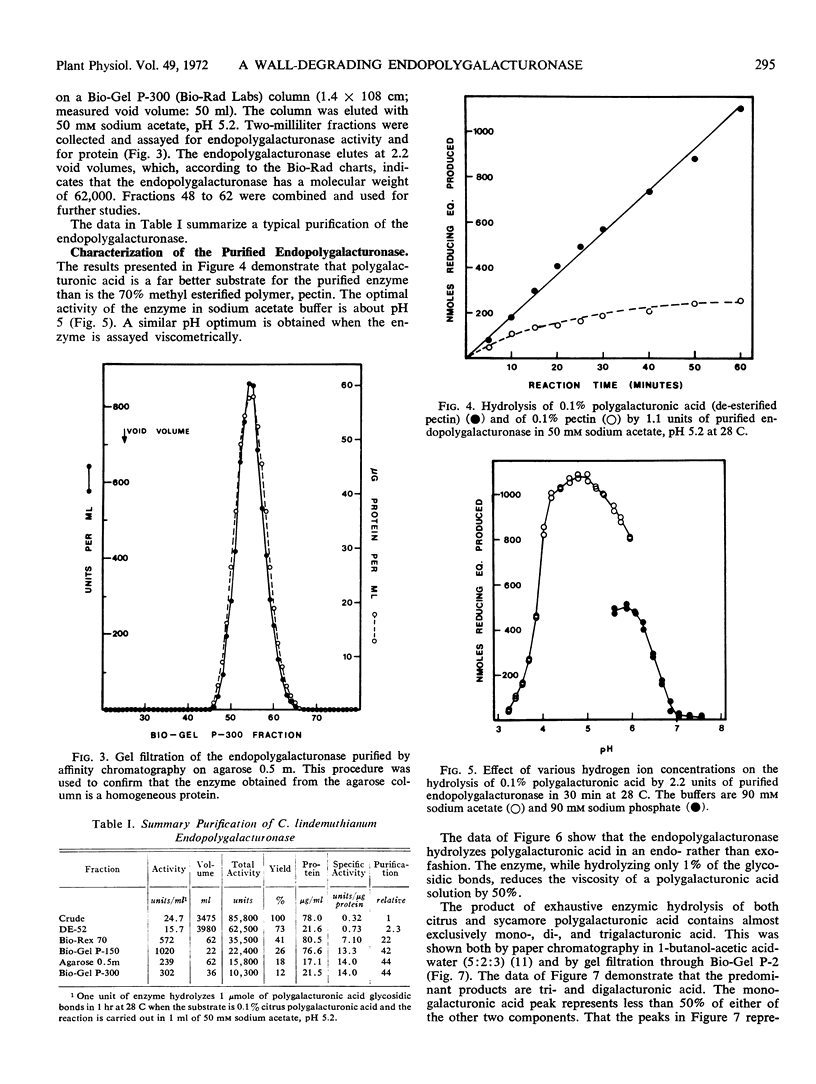
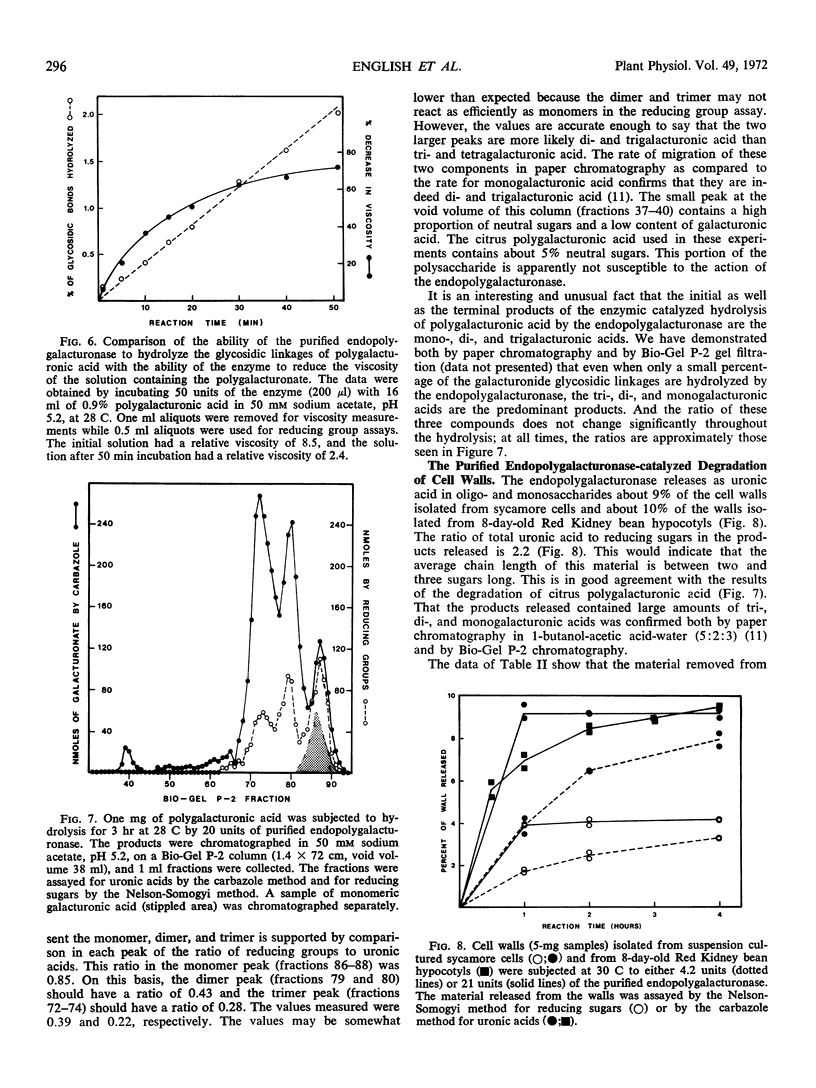
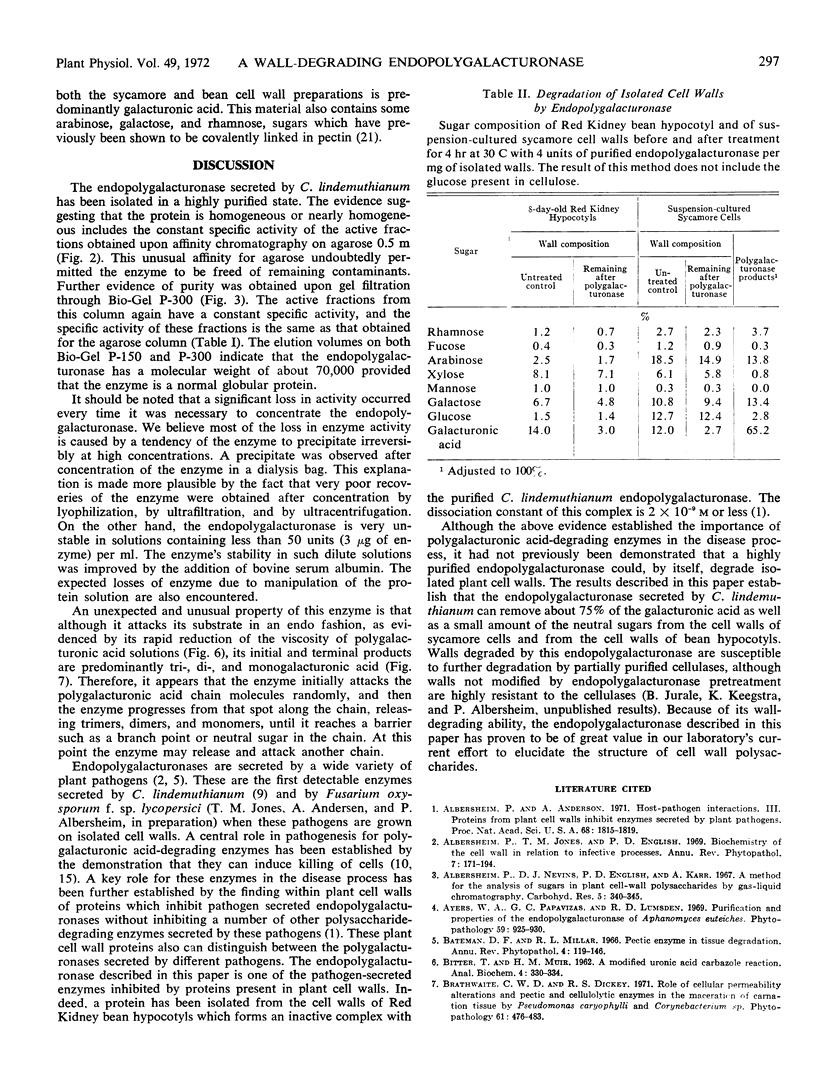
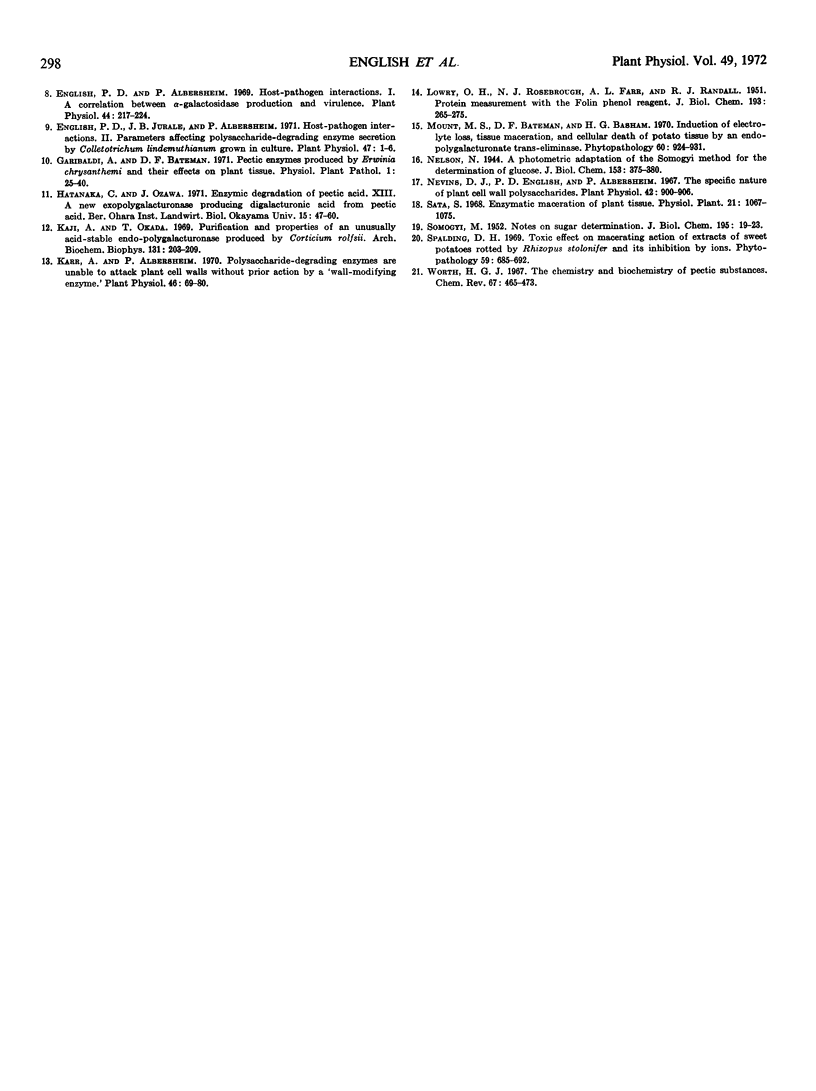
Selected References
These references are in PubMed. This may not be the complete list of references from this article.
- Albersheim P., Anderson A. J. Proteins from plant cell walls inhibit polygalacturonases secreted by plant pathogens. Proc Natl Acad Sci U S A. 1971 Aug;68(8):1815–1819. doi: 10.1073/pnas.68.8.1815. [DOI] [PMC free article] [PubMed] [Google Scholar]
- BITTER T., MUIR H. M. A modified uronic acid carbazole reaction. Anal Biochem. 1962 Oct;4:330–334. doi: 10.1016/0003-2697(62)90095-7. [DOI] [PubMed] [Google Scholar]
- English P. D., Albersheim P. Host-Pathogen Interactions: I. A Correlation Between alpha-Galactosidase Production and Virulence. Plant Physiol. 1969 Feb;44(2):217–224. doi: 10.1104/pp.44.2.217. [DOI] [PMC free article] [PubMed] [Google Scholar]
- English P. D., Jurale J. B., Albersheim P. Host-Pathogen Interactions: II. Parameters Affecting Polysaccharide-degrading Enzyme Secretion by Colletotrichum lindemuthianum Grown in Culture. Plant Physiol. 1971 Jan;47(1):1–6. doi: 10.1104/pp.47.1.1. [DOI] [PMC free article] [PubMed] [Google Scholar]
- Kaji A., Okada T. Purification and properties of an unusually acid-stable endo-polygalacturonase produced by Corticium rolfsii. Arch Biochem Biophys. 1969 Apr;131(1):203–209. doi: 10.1016/0003-9861(69)90122-2. [DOI] [PubMed] [Google Scholar]
- Karr A. L., Albersheim P. Polysaccharide-degrading Enzymes are Unable to Attack Plant Cell Walls without Prior Action by a "Wall-modifying Enzyme". Plant Physiol. 1970 Jul;46(1):69–80. doi: 10.1104/pp.46.1.69. [DOI] [PMC free article] [PubMed] [Google Scholar]
- LOWRY O. H., ROSEBROUGH N. J., FARR A. L., RANDALL R. J. Protein measurement with the Folin phenol reagent. J Biol Chem. 1951 Nov;193(1):265–275. [PubMed] [Google Scholar]
- Nevins D. J., English P. D., Albersheim P. The specific nature of plant cell wall polysaccharides. Plant Physiol. 1967 Jul;42(7):900–906. doi: 10.1104/pp.42.7.900. [DOI] [PMC free article] [PubMed] [Google Scholar]
- SMOGYI M. Notes on sugar determination. J Biol Chem. 1952 Mar;195(1):19–23. [PubMed] [Google Scholar]


